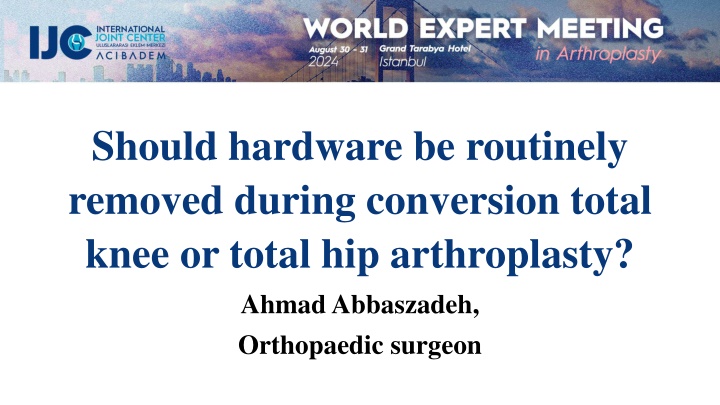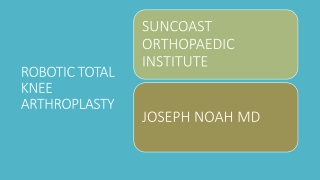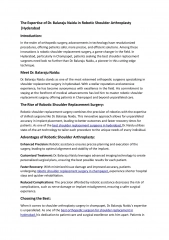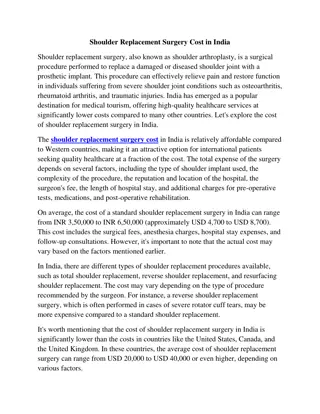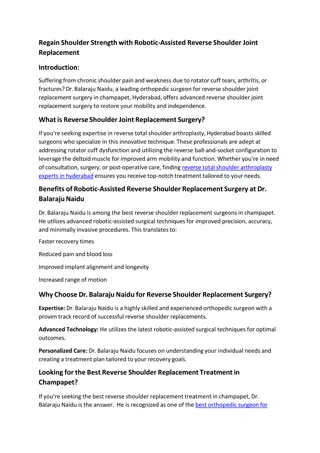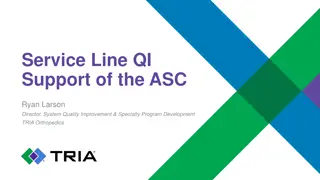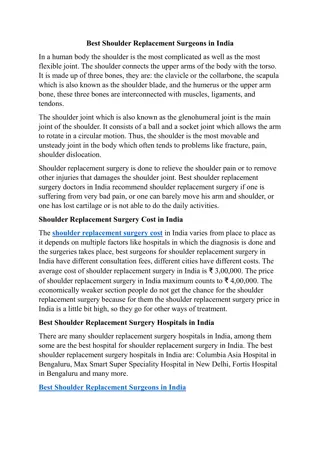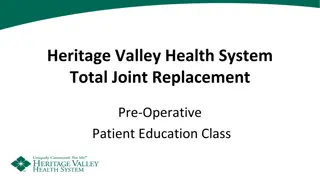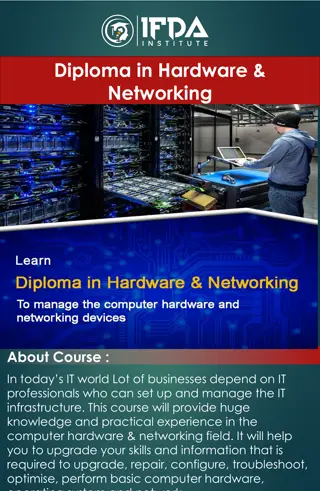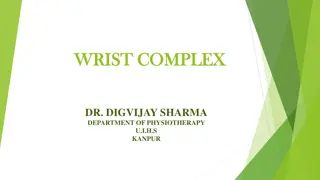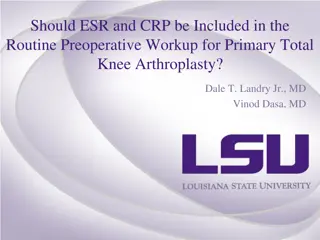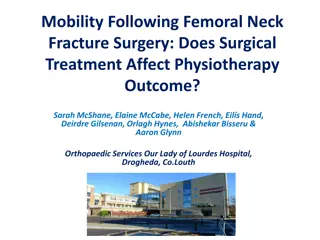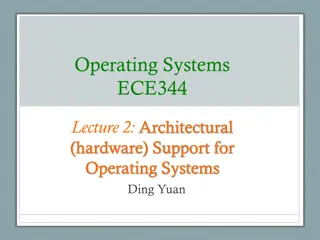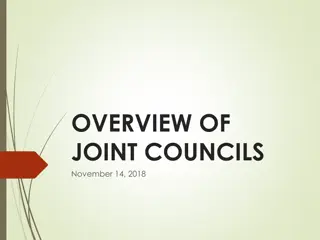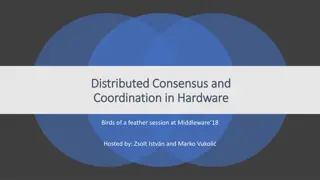Optimal Management of Hardware in Total Joint Arthroplasty
The presence of hardware from previous surgeries during total joint arthroplasty (TJA) presents challenges and potential complications. This study explores the necessity of routine hardware removal, comparing outcomes of staged versus concurrent removal. Results indicate no significant difference in perioperative complications, specifically periprosthetic joint infections (PJIs), supporting the safety of concurrent hardware removal during TJA.
Download Presentation

Please find below an Image/Link to download the presentation.
The content on the website is provided AS IS for your information and personal use only. It may not be sold, licensed, or shared on other websites without obtaining consent from the author.If you encounter any issues during the download, it is possible that the publisher has removed the file from their server.
You are allowed to download the files provided on this website for personal or commercial use, subject to the condition that they are used lawfully. All files are the property of their respective owners.
The content on the website is provided AS IS for your information and personal use only. It may not be sold, licensed, or shared on other websites without obtaining consent from the author.
E N D
Presentation Transcript
Should hardware be routinely removed during conversion total knee or total hip arthroplasty? Ahmad Abbaszadeh, Orthopaedic surgeon
Javad Parvizi Ahmad Abbaszadeh Afshin Taheriazam Umile Giuseppe Longo Llinas Volpe Adolfo Mario Marcelo Lizarraga Ferrand
Why is this topic important: The optimal management of pre-existing orthopedic hardware during total joint arthroplasty (TJA), remains a difficult issue in orthopedic surgery. The presence of hardware from previous surgeries can complicate subsequent arthroplasty procedures, potentially increasing the risk of complications such as periprosthetic joint infections (PJIs). Despite the significant clinical implications, there is no clear consensus on whether routine removal of hardware should be performed during TJA and whether it should be done in a staged or concurrent manner
Literature Review/Process After a literature search in Web of Science, PubMed, and Scopus, we identified 1486 records. After removing 748 duplicates, 738 unique records remained for screening. Following a thorough evaluation of these records, 666 reports were excluded due to irrelevant titles and abstracts, leaving 72 reports for further assessment. In the next phase, reports that failed to meet our eligibility criteria were removed, and 14 studies were ultimately included in this study.
Question: Is there a difference in outcome of TJA when staged versus concurrent hardware removal is performed?
Rationale: Our analysis revealed that there is no significant difference between concurrent and staged TJA (P = 0.56). PJI after 90 days was 2.77% (CI 95% 1.57%-4.84%) and 3.72% (CI 95% 0.84%-14.91%) in the concurrent and staged groups, respectively. For PJI proportion after the longest follow-up, in the concurrent group, it was 3.11% (CI 95% 1.83%-5.25%) and in the staged group it was 4.14% (CI 95% 0.86%-17.72%) with no significant statistical difference between the groups (p = 0.6). The analysis of PJI rate based on joint type showed that there was no statistically significant difference between the groups for either knee (p = 0.5) or hip (p = 0.73) joints
Question: Is there a difference in outcome of TJA when staged versus concurrent hardware removal is performed? Response / Recommendation: NO. The literature indicates that there is no significant difference in perioperative complications, specifically periprosthetic joint infections (PJI), between staged and concurrent hardware removal during conversion total joint arthroplasty (TJA). Thus, it appears that concurrent hardware removal can be performed safely during joint arthroplasty, provided that a preoperative infection workup is negative and no contraindications for implantation of prosthesis are present.
